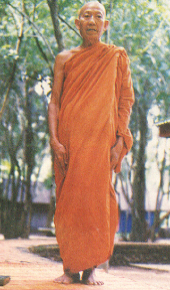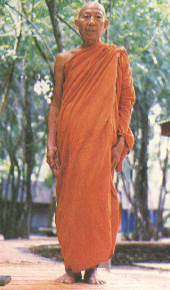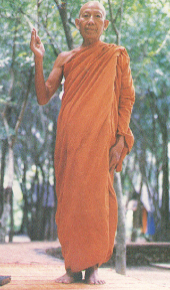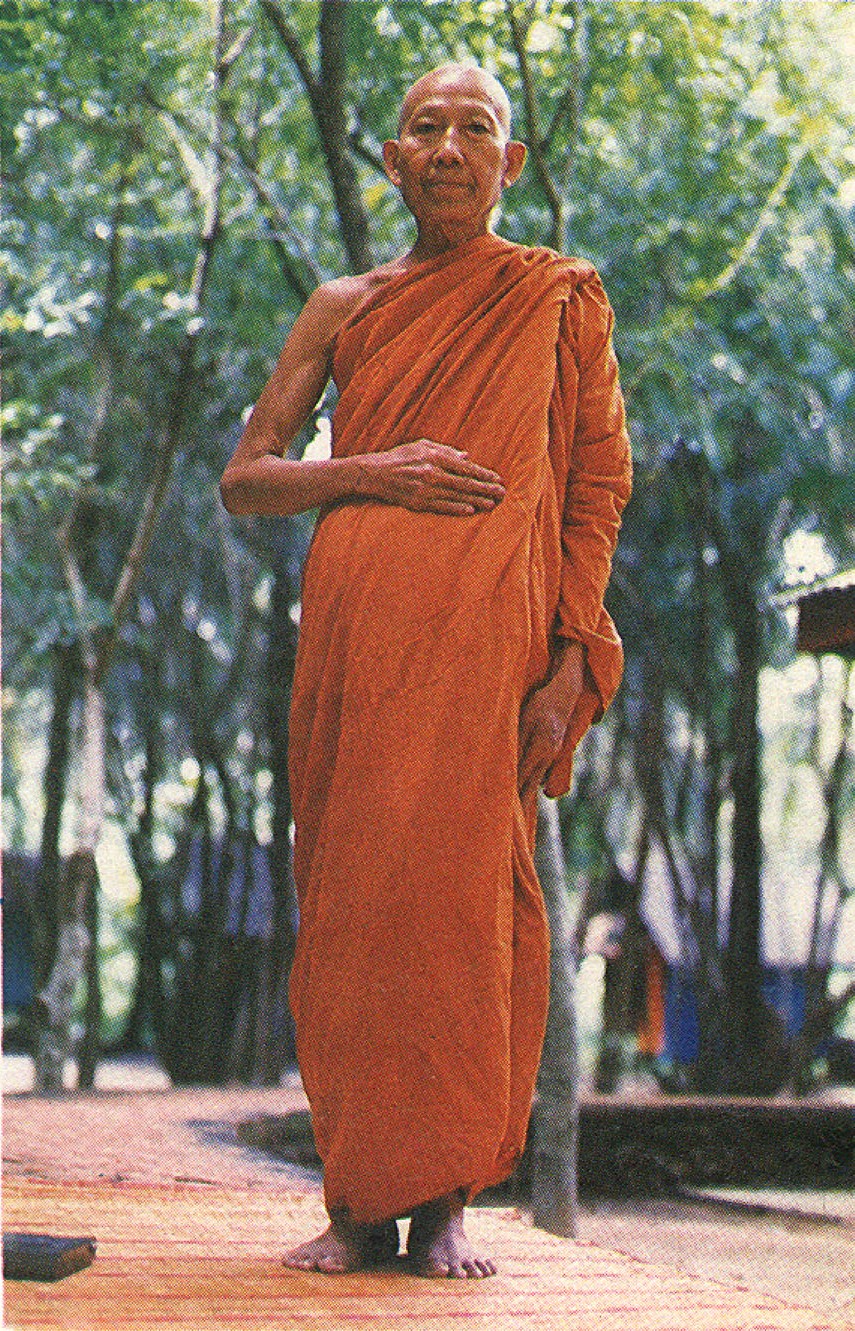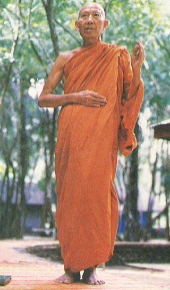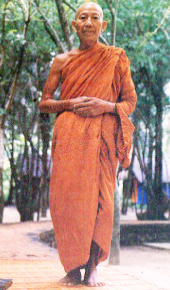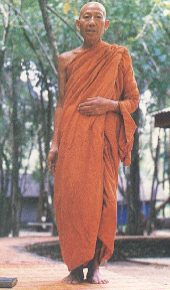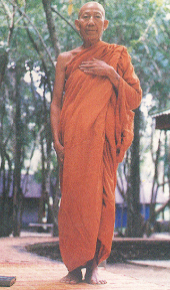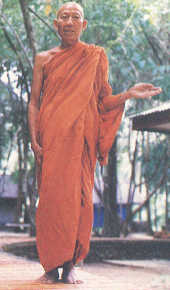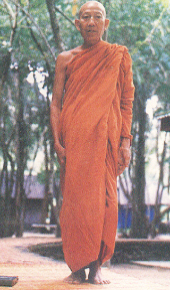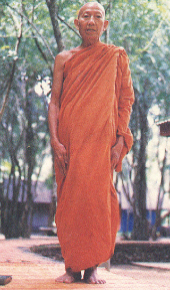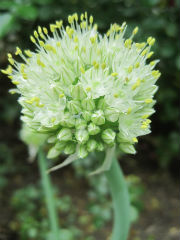
Luangpor Teean’s Awareness-Mindfulness Meditation
Developing Awareness-Mindfulness in Daily Life
You should develop your awareness frequently and regularly. You can practise in any posture such as sitting or lying. When you are on a bus or in a car you may put your hand on your thigh, turn your palm up and down and be aware of the movement. You may gently and slowly rub your fingers together or you may grasp-release your hand. The awareness will be awakened by these actions.
You are able to develop awareness-mindfulness all the time when you are at home doing the household chores: washing your clothes, sweeping the floor, cleaning the house, washing dishes or gardening. The awareness will accumulate little by little every day like raindrops falling in a container or earthen jar. If the container is not leaking, one day it will be full of water.
You may as well practise by walking back and forth, swinging your foot or your hand, or lying down in bed and grasping-releasing your hand repeatedly until you fall asleep. When you wake up in the morning, simply do the same practice. This is the developing awareness.
Caṅkama (Walking Meditation)
Caṅkama in Pāli means walking forward and backwards or walking to and from. If you have been sitting for a long time, it may cause you aches and pains, you can change your position from sitting to walking. After walking for a long time, you can as well change the position from walking to sitting. There are four positions which you may choose: standing, walking, sitting, and lying. Time should be well allotted for each of them.
Do not move your arms while you are walking, but keep your arms across your chest or clasp your hands behind your back.
When you are walking to and from, you have to be aware of your feet’s movement. Do not recite “the right foot is moving” and “the left foot is moving”.
Do not walk too fast or too slow, just walk with your normal speed.
To walk with awareness is the method of walking meditation. If you walk all day without awareness, it is not walking meditation; you will waste your time.
Walking forward and backwards with awareness is walking meditation.
Rhythmic Hand Movements
If you want to develop sati, samādhi and paññā, you need to know the
method and techniques of practice.
Techniques of practice are: do not sit still, move your hands rhythmically all the time, do not close your eyes, and do not recite any word(s). You may sit in any position, no matter if you sit on the floor or on a chair; you may stand or lie down, but you have to be aware of every movement.
The method of practice in the sitting position is as follows:
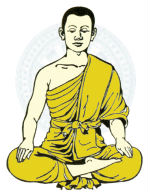
1. Sit cross-legged and upright; rest both hands on the thighs with your eyes open.
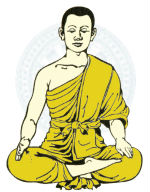
2. With awareness, turn your right hand onto its edge and stop.
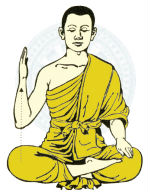
3. With awareness, slowly raise your right hand up and stop.
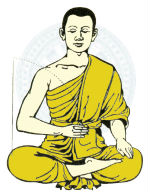
4. With awareness, slowly lower your right hand to rest on your abdomen and stop.
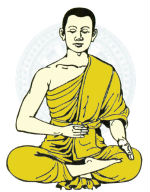
5. With awareness, slowly turn your left hand onto its edge and stop.
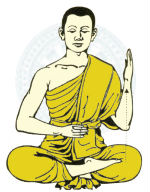
6. With awareness, slowly raise your left hand up and stop.
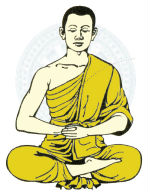
7. With awareness, slowly lower your left hand to rest on your right hand and stop.
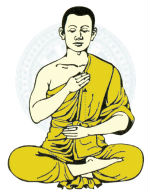
8. With awareness, slowly move your right hand up to rest on your chest and stop.
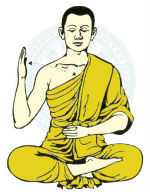
9. With awareness, slowly move your right hand out and stop.
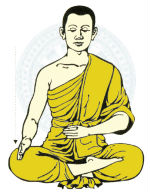
10. With awareness, slowly lower your right hand to your thigh and stop.
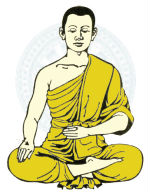
11. With awareness, slowly turn your right hand down and stop.
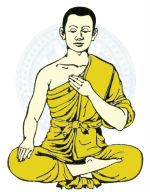
12. With awareness, slowly move your left hand up to rest on the chest and stop.
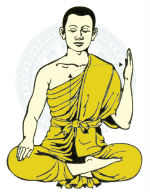
13. With awareness, slowly move your left hand out and stop.
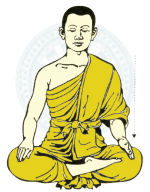
14. With awareness, slowly lower your left hand to your thigh and stop.
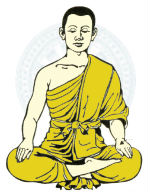
15. With awareness, slowly turn your left hand down and stop.

